 “What we did to protect animals actually protected roads,” said Vermont Agency of Natural Resources secretary Deb Markowitz at a general session at the Northeastern Transportation and Wildlife Conference this week (Sept. 21 – 24) in Burlington, Vermont. In places where culverts had been resized to allow wildlife to walk along the banks during low flow periods, the culverts have held during floods like the one caused by Tropical Storm Irene in Vermont.
“What we did to protect animals actually protected roads,” said Vermont Agency of Natural Resources secretary Deb Markowitz at a general session at the Northeastern Transportation and Wildlife Conference this week (Sept. 21 – 24) in Burlington, Vermont. In places where culverts had been resized to allow wildlife to walk along the banks during low flow periods, the culverts have held during floods like the one caused by Tropical Storm Irene in Vermont.
A documentary on the Highway Wilding project that built wildlife passages along the TransCanada Highway in Banff National Park said that the cost of hitting a moose with a vehicle averages $30,000. Hitting a deer averages over $1,000. It doesn’t take many wildlife collisions to cost-justify a wildlife crossing, the documentary said, and some highway locations are the scene of hundreds of collisions.
Photo: Camera fail. None of my photos of Markowitz speaking even made it onto my camera’s memory card. Here’s her official portrait off the Vermont Agency of Natural Resources website.

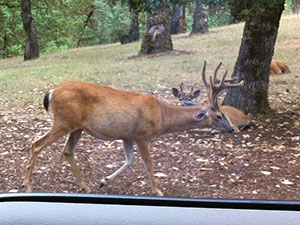 Epizootic Hemorrhagic Disease (EHD) has been confirmed as the cause of death in over 100 deer in southwestern Oregon,
Epizootic Hemorrhagic Disease (EHD) has been confirmed as the cause of death in over 100 deer in southwestern Oregon, 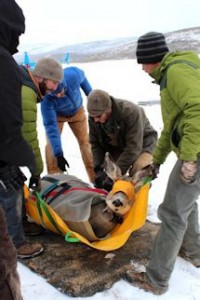 Why are mule deer declining in Western states? So far, that’s a mystery. The
Why are mule deer declining in Western states? So far, that’s a mystery. The 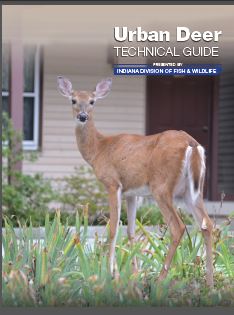 The Indiana Department of Natural Resources Division of Fish & Wildlife has put together a 32-page online booklet to help municipalities better understand deer and available management options. The impact of white-tailed deer within urban communities is not just a problem in several Indiana communities, but is a growing problem nationwide.
The Indiana Department of Natural Resources Division of Fish & Wildlife has put together a 32-page online booklet to help municipalities better understand deer and available management options. The impact of white-tailed deer within urban communities is not just a problem in several Indiana communities, but is a growing problem nationwide.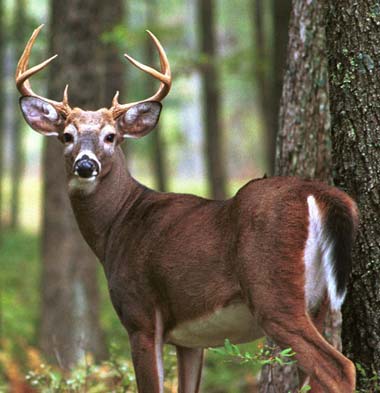 Chronic Wasting Disease (CWD) was first detected in Pennsylvania in 2012 at a captive facility in Adams County. Subsequently, three free-ranging deer harvested by hunters during the 2012 season tested positive for CWD. Now,
Chronic Wasting Disease (CWD) was first detected in Pennsylvania in 2012 at a captive facility in Adams County. Subsequently, three free-ranging deer harvested by hunters during the 2012 season tested positive for CWD. Now,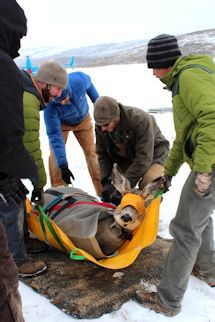 Wyoming Game and Fish Department personnel, researchers with the Wyoming Cooperative Fish and Wildlife Research Unit at the University of Wyoming, personnel from the Bureau of Land Management and US Forest Service, and many volunteers are trapping mule deer for two research projects in southwest Wyoming, a
Wyoming Game and Fish Department personnel, researchers with the Wyoming Cooperative Fish and Wildlife Research Unit at the University of Wyoming, personnel from the Bureau of Land Management and US Forest Service, and many volunteers are trapping mule deer for two research projects in southwest Wyoming, a 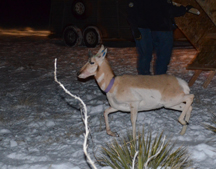 At Trapper’s Point in Wyoming, migrating pronghorns and mule deer are funneled by two rivers to 13-mile stretch of Highway 191, where they attempt to cross. Each year they endanger their own lives crossing the highway, and human lives as well,
At Trapper’s Point in Wyoming, migrating pronghorns and mule deer are funneled by two rivers to 13-mile stretch of Highway 191, where they attempt to cross. Each year they endanger their own lives crossing the highway, and human lives as well,  Two stories today focus on two different states’ efforts to get lead out of the environment.
Two stories today focus on two different states’ efforts to get lead out of the environment.